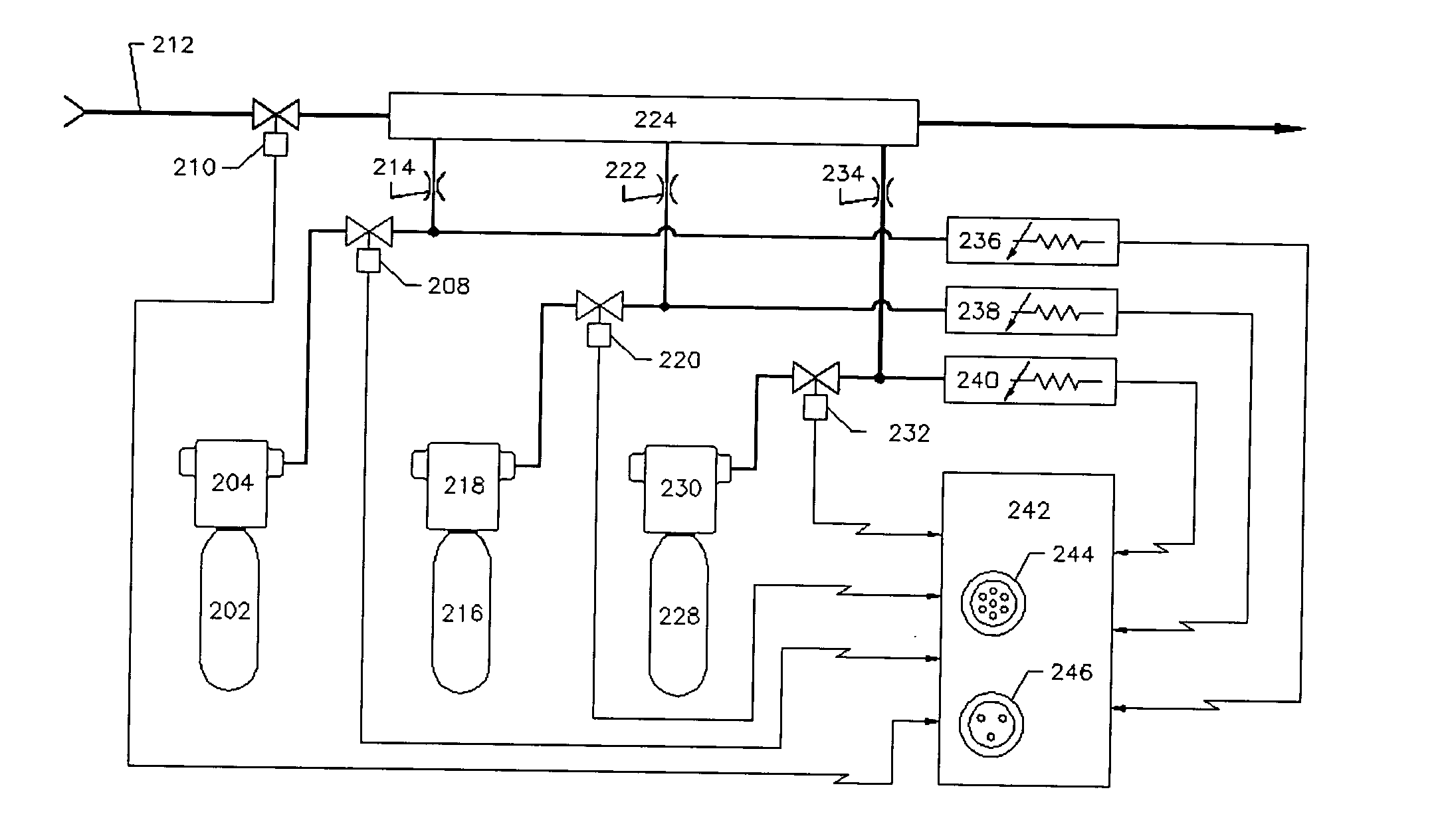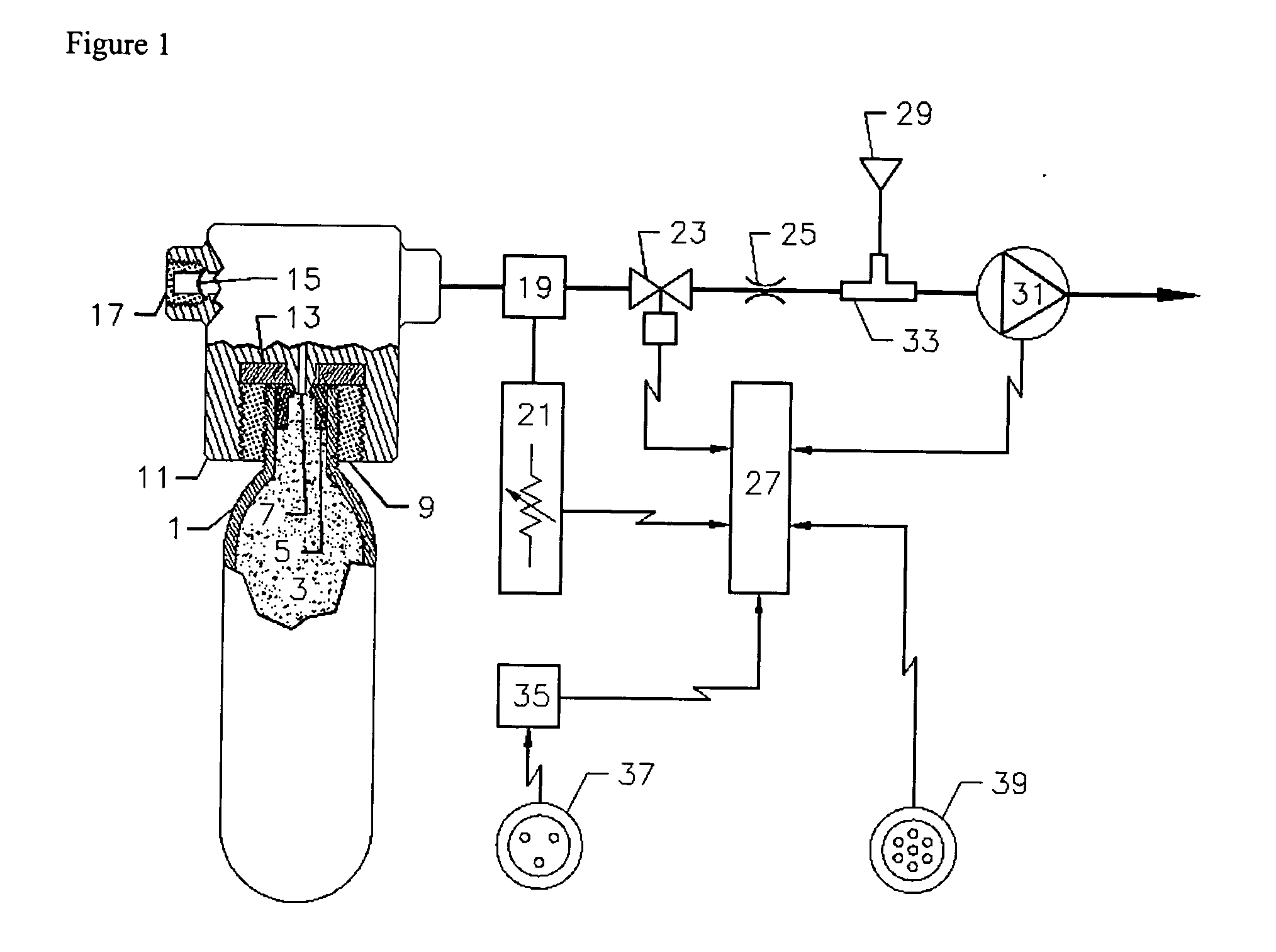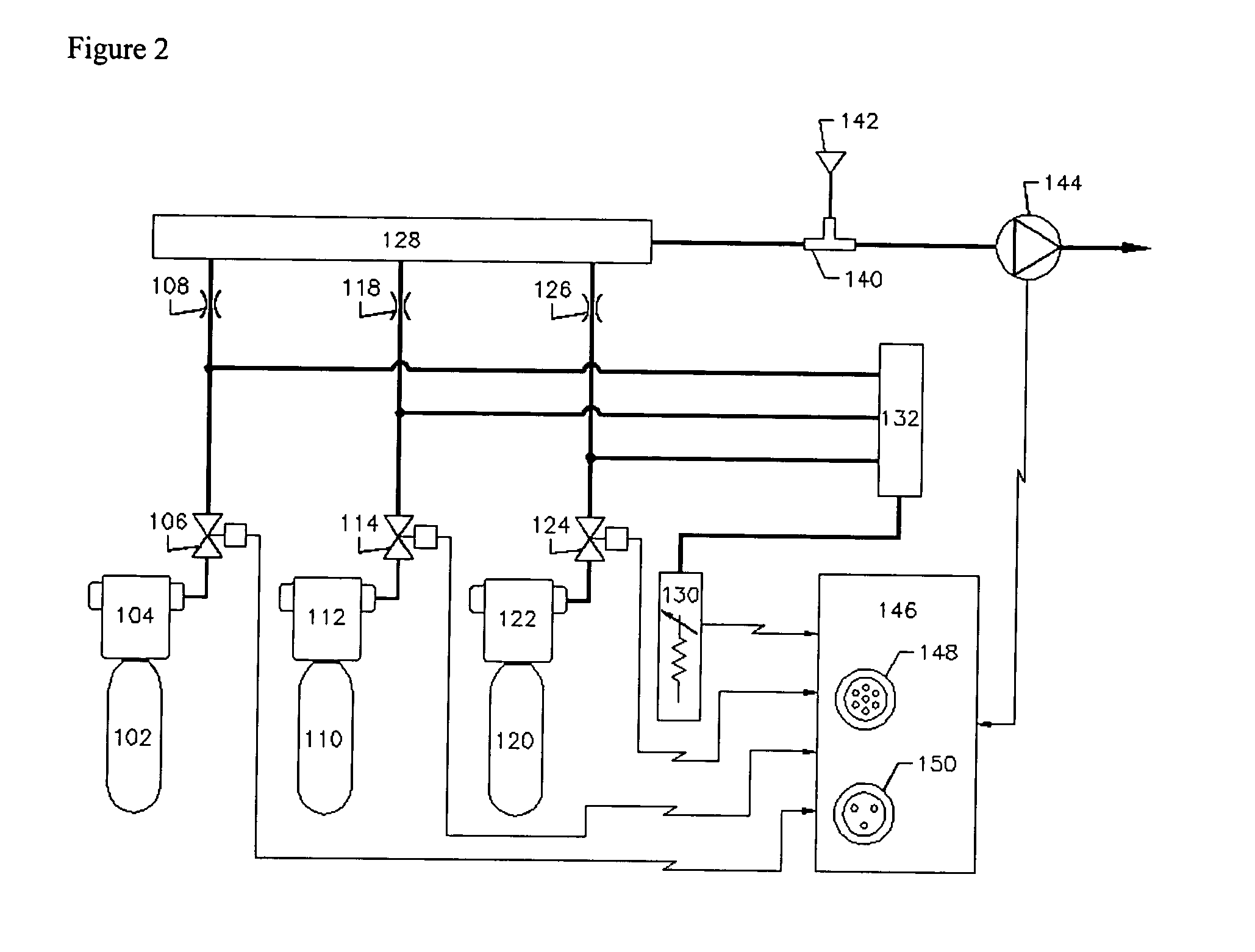Apparatus and method for generating calibration gas
a calibration gas and apparatus technology, applied in the direction of liquid transfer devices, instruments, liquid handling, etc., can solve the problems of destroying the gas sample, the sensor will gradually lose sensitivity, and the gas molecules will change permanently, so as to achieve accurate gas concentration and low cost
- Summary
- Abstract
- Description
- Claims
- Application Information
AI Technical Summary
Benefits of technology
Problems solved by technology
Method used
Image
Examples
Embodiment Construction
FIG. 1 illustrates a gas generator built with a miniature gas cylinder, or cartridge. The generator includes a gas source, a gas dilution device, and a control system. The techniques used to provide diluted, low concentration gas are basically pneumatic pressure regulation and flow control.
The source of gas includes a miniature gas cylinder, a gas release device and a flow control system. As shown, the gas source is a miniature gas cylinder 1 of no more than 100 ml internal volume containing a compressed, concentrated gas 3, and closed by a welded cylinder cap 5. The cylinder cap 5 is specially constructed with a reduced thickness portion in the center of the cap, which facilitates piercing of the cylinder during installation. Cylinder 1 is held by a threaded neck and seal retainer 9 in a gas cylinder receptacle 11 which includes a piercing device 7 that punctures the reduced thickness portion of cap 5 to release the contents of the cylinder into the receptacle 11. The piercing dev...
PUM
| Property | Measurement | Unit |
|---|---|---|
| volume | aaaaa | aaaaa |
| diameter | aaaaa | aaaaa |
| diameter | aaaaa | aaaaa |
Abstract
Description
Claims
Application Information
 Login to View More
Login to View More - R&D
- Intellectual Property
- Life Sciences
- Materials
- Tech Scout
- Unparalleled Data Quality
- Higher Quality Content
- 60% Fewer Hallucinations
Browse by: Latest US Patents, China's latest patents, Technical Efficacy Thesaurus, Application Domain, Technology Topic, Popular Technical Reports.
© 2025 PatSnap. All rights reserved.Legal|Privacy policy|Modern Slavery Act Transparency Statement|Sitemap|About US| Contact US: help@patsnap.com



